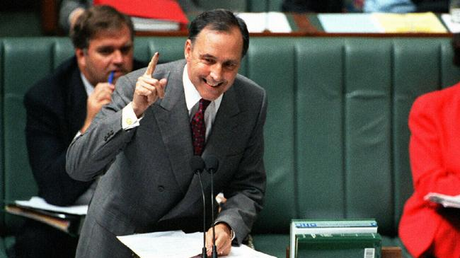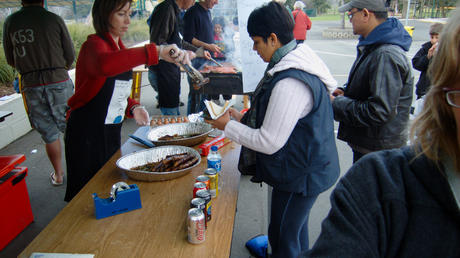
This election, 5.92% of the total votes cast were informal – the highest proportion for nearly thirty years.
739,872 voters failed to have their ballot for the House of Representatives counted. That’s a very large number of people who lost – or gave up - their opportunity to express a preference about who represents them in federal parliament.
The only time we have seen a higher rate of informal voting was in 1984 when 6.34% of the vote was informal. But the 1984 election was an anomaly. It was extraordinarily high compared to the previous election – 1983 – when the informal voting rate had been only 2.09% (and, in 1983, missing and discarded ballots were included in the informal total, whereas for all elections after, they haven’t been).
Judging by analysis of informal votes cast at previous elections, in most cases, these informal votes will be either ballots where the voter has put a number ‘1’ only (without filling in the rest of their preferences) or has left it blank. But there will be other informal votes where voters have put a tick or a cross, left out numbers on their preferences or got the sequence of numbers wrong, scribbled or put some slogan on their ballot papers, or put their name on it (you’re not supposed to identify yourself on the ballot).
The rising proportion of informal votes is a major democratic concern
Voting in Australia demands a higher standard than in many other countries where a cross, tick or number '1' is all that is required. In Australia, for a House of Representatives ballot to be cast correctly, the voter has to number all of the candidates in order of preference. If there are 14 candidates on the ballot, s/he has to put a ‘1’ in the box for their preference and then record their next preference, numbering all boxes sequentially from 2 to 14. The high rate of informal voting shows that not everyone manages, or wants, to do that.
The spike in 1984 was thought to be due to the introduction of above-the-line voting in the Senate. That year, during the election, there were TV ads broadcast which showed the new above-the-line Senate voting process. It seemed to have confused many voters who thought they could just mark a single preference for the House of Reps and then stop.
The introduction of an (outwardly) simpler voting system in the Senate has come at the cost of higher informal votes for the House of Representatives. Ever since 1984, we’ve been struggling to get informal voting below 3% and, since 2001, down below 4% or even 5%.
One important question about all of this is: How many of the 739,872 voters intended to cast a valid vote but failed because they incorrectly marked the ballot paper (accidental informal voting) versus how many people chose not to vote (deliberate)?
The Australian Electoral Commission will, as it does after every election, produce a report on informal voting in 2013 and that report will break down the informal votes into the different categories and show us how many people were trying – but failing – to cast a valid vote.
But we know that, at the last election in 2010, just over half of the informal votes showed a preference for one or several candidates on the ballot paper.
We also know from previous research that there are major risk factors for casting an accidental informal vote.
The first is being a voter from a non-English speaking background. The seats with the highest rates of informality are also usually those with the highest proportions of people from non-English speaking backgrounds.
The seats of Watson, Fowler and Blaxland were the top three seats returning informal votes this election and were all also in the top three in 2010. Across Australia, these three seats have the highest proportion of people who speak English ‘not well’ or ‘not at all’.
But these seats are also in NSW and so are the next 13 seats with the highest percentages of informal votes this election.
In NSW, optional preferential voting is allowed in state elections for the Legislative Assembly. As a result NSW voters are used to marking only ‘1’ on the ballot paper in order to record a valid vote. Some of these voters are unwittingly nullifying their vote by using the same method for the House of Representatives at federal elections.
Another major predictor of informality is the length of the ballot paper. The more candidates there are on the ballot, the more likely someone will fail to number them sequentially. Watson and Blaxland had seven candidates. Fowler had six.
In Australia, we have high voter turnout across the socio-economic spectrum (unlike many voluntary voting systems such as the US) and the frequency of elections, the disparity between voting methods at three distinct levels of government and the presence of compulsory preferential voting, all combine to create a complex voting system that makes it difficult for those with low English and literacy and numeracy competence to record a formal vote. That’s what we generally see happen with informal voting.
But there’s also something else going on because there has been a significant rise in blank ballots. Only 16% of informal votes in 1987 were blank, but this was up to 21% in 2001 and 29% in 2010.
2010 was also the first time there were more blank ballots than ballots marked with a ‘1’ only. Blank ballots are notoriously difficult to interpret. Are they an expression of apathy, a rejection of the choices on offer, or acquiescence to the political status quo? Or do they signify confusion, frustration and even resignation at an inability to mark the ballot in the required manner?
What we do know is that many voters whose votes were informal will have expressed a preference this election, but failed to have it recorded. And so the rising proportion of informal votes is a major democratic concern.




